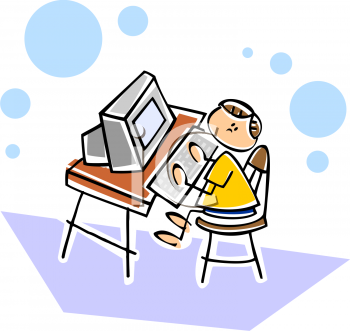- Talk to your parents about Internet use so you know what sites they feel comfortable with you using.
- Never post information that is too personal, such as home address, phone number, or school – this information is valuable.
- Your user name also should not reveal too much information about yourself.
- Report bullying or harassment to a parent, teacher, or other trusted adult.
- Think carefully about your actions online (don’t be a cyberbully yourself). You shouldn’t impersonate someone else, or post pictures of other people that they are not aware of or do not approve of.
- Be aware of privacy settings and know who has access to your blog.
- Set settings for who can comment on your blog so that you approve all comments first, or consider turning off the comment feature.
- Avoiding linking your blog to others’ who may have public access. Don’t be concerned with popularity.
- Remember that once you post a picture or comment online and someone sees it, you can’t take it back.
- Keep your password a secret from everyone except your parents.
Saturday, January 29, 2011
Blogs: Safety Tips for Children
Blogs in the Classroom
1. Journal writing/reading responses: Typically, when students are asked to write informal journal entries or responses to books they have read, the teacher is the only one who reads what is written, which sometimes develops into a written conversation. If this same task was completed using a blog, this would allow other students to read each others' thoughts and ideas. They could respond to their peers' posts and read comments from everyone, not just one teacher. A sense of community would develop from working together and offering comments.
2. Discussing and debating current events: Using my blog, I could post links to articles or videos that would be appropriate and relevant to class discussions. The students would post their opinion on these matters. This would require them to read, think about how they feel, express their feelings in a safe environment, and stay informed about what is going on in the world they live in.
3. Extending or introducing class topics: Before beginning a unit or new lesson, I could use a blog as an introduction, or anticipatory set. I would post a question for students to consider, a short reading to make them think, a topic to discuss with family members, or an assignment to complete before class. As a post-topic activity I might ask students to reflect upon what was discussed during class, or informally assess their learning by reading what they took out of the day's lesson.
Standards (related to all 3 ideas):
ELA :
Standard 2
Students will read, write, listen, and speak for literary response and expression.
Students will read and listen to oral, written and electronically produced texts and performances, relate texts and performances to their own lives, and develop an understanding of the diverse social, historical, and cultural dimensions the texts and performances represent. As speakers and writers, students will use oral and written language for self-expression and artistic creation.
Standard 4
Students will read, write, listen, and speak for social interaction.
Students will use oral and written language for effective social communication with a wide variety of people. As readers and listeners, they will use the social communications of others to enrich their understanding of people and their views.
Technology:
Standard 2: Students will access, generate, process, and transfer information using appropriate technologies.
Computer Technology
Key idea: Computers, as tools for design, modeling, information processing, communication, and system control, have greatly increased human productivity and knowledge.
